| Listing 1 - 6 of 6 |
Sort by
|
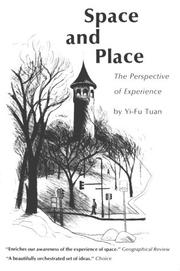
ISBN: 0816608849 Year: 1997 Publisher: Minneapolis (Minn.) University of Minnesota
Abstract | Keywords | Export | Availability | Bookmark
 Loading...
Loading...Choose an application
- Reference Manager
- EndNote
- RefWorks (Direct export to RefWorks)
A study of the ways in which people feel and think about space, how they form attachments to home, neighborhood, and nation, and how feelings about space and place are affected by the sense of time.“Since it is the breadth and universality of his argument that concerns Yi-Fu Tuan, experience is defined as ‘all the modes by which a person knows and constructs reality,’ and examples are taken with equal ease from non-literate cultures, from ancient and modern oriental and western civilizations, from novels, poetry, anthropology, psychology, and theology. The result is a remarkable synthesis, which reflects well the subtleties of experience and yet avoids the pitfalls of arbitrary classification and facile generalization. For these reasons, and for its general tone and erudition and humanism, this book will surely be one that will endure when the current flurry of academic interest in environmental experience abates.” Canadian Geographer
Geographical perception --- 159.9 --- Environmental perception --- Maps, Mental --- Mental maps --- Perceptual cartography --- Perceptual maps --- Perception --- Orientation (Psychology) --- Space perception --- Psychologie
Book
ISBN: 9023232631 Year: 1997 Publisher: Assen Van Gorcum
Abstract | Keywords | Export | Availability | Bookmark
 Loading...
Loading...Choose an application
- Reference Manager
- EndNote
- RefWorks (Direct export to RefWorks)
Social geography --- Sociology of environment --- Sociology of the family. Sociology of sexuality --- City children --- City planning --- Geographical perception --- Hulpwetenschappen --- Congresses. --- sociologie --- sociologie. --- Sociologie. --- Environmental perception --- Maps, Mental --- Mental maps --- Perceptual cartography --- Perceptual maps --- Perception --- Orientation (Psychology) --- Space perception --- Children in cities --- Urban children --- Children --- City dwellers --- Urban teenagers --- Urban youth --- Congresses
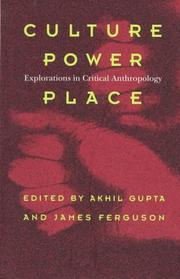
ISBN: 0822319403 0822319349 9780822319405 9780822319344 Year: 1997 Publisher: Durham : Duke University Press,
Abstract | Keywords | Export | Availability | Bookmark
 Loading...
Loading...Choose an application
- Reference Manager
- EndNote
- RefWorks (Direct export to RefWorks)
#SBIB:39A9 --- Medische antropologie / gezondheid / handicaps --- Perception géographique --- Philosophical anthropology --- Social geography --- human geography --- social anthropology --- Anthropology --- Geographical perception --- Environmental perception --- Maps, Mental --- Mental maps --- Perceptual cartography --- Perceptual maps --- Perception --- Orientation (Psychology) --- Space perception --- Methodology --- Philosophy --- Geographical perception. --- Methodology. --- Philosophy. --- Anthropologie --- Philosophie --- Méthodologie --- Anthropology - Philosophy --- Anthropology - Methodology --- ANTHROPOLOGIE --- PERCEPTION GEOGRAPHIQUE --- PHILOSOPHIE --- METHODOLOGIE
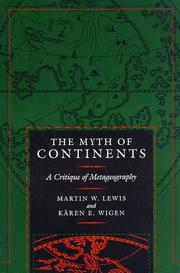
ISBN: 1280080256 9786613520241 0520918592 9780520918597 0520207424 9780520207424 0520207432 9780520207431 Year: 1997 Publisher: Berkeley : University of California Press,
Abstract | Keywords | Export | Availability | Bookmark
 Loading...
Loading...Choose an application
- Reference Manager
- EndNote
- RefWorks (Direct export to RefWorks)
In this thoughtful and engaging critique, geographer Martin W. Lewis and historian Kären Wigen reexamine the basic geographical divisions we take for granted, and challenge the unconscious spatial frameworks that govern the way we perceive the world. Arguing that notions of East vs. West, First World vs. Third World, and even the sevenfold continental system are simplistic and misconceived, the authors trace the history of such misconceptions. Their up-to-the-minute study reflects both on the global scale and its relation to the specific continents of Europe, Asia, and Africa-actually part of one contiguous landmass.The Myth of Continents sheds new light on how our metageographical assumptions grew out of cultural concepts: how the first continental divisions developed from classical times; how the Urals became the division between the so-called continents of Europe and Asia; how countries like Pakistan and Afghanistan recently shifted macroregions in the general consciousness.This extremely readable and thought-provoking analysis also explores the ways that new economic regions, the end of the cold war, and the proliferation of communication technologies change our understanding of the world. It stimulates thinking about the role of large-scale spatial constructs as driving forces behind particular worldviews and encourages everyone to take a more thoughtful, geographically informed approach to the task of describing and interpreting the human diversity of the planet.
Geographical perception. --- Geopolitics. --- World politics --- Environmental perception --- Maps, Mental --- Mental maps --- Perceptual cartography --- Perceptual maps --- Perception --- Orientation (Psychology) --- Space perception --- Geography --- Perception géographique --- Géographie --- History --- Histoire --- Geodesy. Cartography --- History as a science --- Geografie --- Sociale en economische geografie --- Algemeen. --- Geographical perception --- academic. --- afghanistan. --- analysis. --- asia. --- cold war. --- continental divide. --- continents. --- criticism. --- critique. --- economic. --- economy. --- europe. --- first world. --- geographical. --- geography. --- global. --- government. --- historian. --- historical. --- international issues. --- international. --- law and order. --- macroregions. --- misconception. --- myth. --- pakistan. --- philosophy. --- regional. --- scholarly. --- third world. --- world issues.
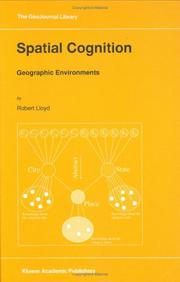
ISBN: 0792343751 9048147832 940173044X Year: 1997 Publisher: Dordrecht ; Boston, MA ; London : Kluwer,
Abstract | Keywords | Export | Availability | Bookmark
 Loading...
Loading...Choose an application
- Reference Manager
- EndNote
- RefWorks (Direct export to RefWorks)
10.2 Summary of Ideas ..................................................... 256 10.2.1 Spatial Behavior As Rules For Decision Making ................................... 258 10.2.2. Cognitive Mapping ......................................................................... 258 10.2.3. Storing Information ................................................. " ...................... 260 10.2.4. Searching ..................................................................................... 260 10.2.5. Learning ........................................................................................ 261 10.2.6. Judging Similarity .......................................................................... 261 10.2.7 Neural Geographic Information Science (NGIS) .................................... 262 REFERENCES ............................................... 265 INDEX ........................ .............. 279 ACKNOWLEDGEMENTS ................................... 287 x LIST OF TABLES Table 8.1: The types of similarity comparisons created for the experiment to determine the effect ofx as a first or second common or distinctive feature (Lloyd, Rostkowska-Covington, and Steinke 1996). Table 9.1: Data used to compute the gravity model using regression and a neural network. Data for all variables are scaled so that the highest value equals 0.9 and the lowest value equals 0.1. Table 9.2: Class means for 11 socio-economic and life-cycle variables for the Black, Integrated, and White classes. Table 9.3: Weights for neuron at row 5 and column 1 that learned the blue horizontal rectangle map symbol. LIST OF FIGURES Figure 1.1: Spatial cognition is a research area of interest for both geography and psychology. Both disciplines are interested in fundamental ideas related to encoding processes, internal representations, and decoding processes. Figure 1.2: The place names on this map of New Orleans depict the propositions used for navigation by local residents. A similar map appeared in the June 30, 1991, edition of The Times-Picayune.
Geographical perception. --- Space perception. --- Geography. --- Artificial intelligence. --- Social sciences. --- Geography, general. --- Artificial Intelligence. --- Methodology of the Social Sciences. --- Behavioral sciences --- Human sciences --- Sciences, Social --- Social science --- Social studies --- Civilization --- AI (Artificial intelligence) --- Artificial thinking --- Electronic brains --- Intellectronics --- Intelligence, Artificial --- Intelligent machines --- Machine intelligence --- Thinking, Artificial --- Bionics --- Cognitive science --- Digital computer simulation --- Electronic data processing --- Logic machines --- Machine theory --- Self-organizing systems --- Simulation methods --- Fifth generation computers --- Neural computers --- Cosmography --- Earth sciences --- World history --- Environmental perception --- Maps, Mental --- Mental maps --- Perceptual cartography --- Perceptual maps --- Perception --- Orientation (Psychology) --- Space perception --- Spatial perception --- Spatial behavior --- Figure-ground perception --- Geographical perception
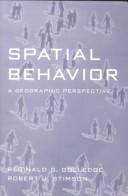
ISBN: 1572300507 1572300493 Year: 1997 Publisher: New York Guilford Press
Abstract | Keywords | Export | Availability | Bookmark
 Loading...
Loading...Choose an application
- Reference Manager
- EndNote
- RefWorks (Direct export to RefWorks)
How do human beings negotiate the spaces in which they live, work, and play? How are firms and institutions, and their spatial behaviors, being affected by processes of economic and societal change? What decisions do they make about their natural and built environment, and how are these decisions acted out? Updating and expanding concepts of decision making and choice behavior on different geographic scales, this major revision of the authors' acclaimed Analytical Behavioral Geography presents theoretical foundations, extensive case studies, and empirical evidence of human behavior in a comprehensive range of physical, social, and economic settings. Generously illustrated with maps, diagrams, and tables, the volume also covers issues of gender, discusses traditionally excluded groups such as the physically and mentally challenged, and addresses the pressing needs of our growing elderly population.
Human geography. --- Spatial behavior. --- Decision making. --- Geographical perception. --- 911 --- 159.92 --- 159.9 --- Environmental perception --- Maps, Mental --- Mental maps --- Perceptual cartography --- Perceptual maps --- Perception --- Orientation (Psychology) --- Space perception --- Deciding --- Decision (Psychology) --- Decision analysis --- Decision processes --- Making decisions --- Management --- Management decisions --- Choice (Psychology) --- Problem solving --- Behavior, Spatial --- Proxemic behavior --- Space behavior --- Spatially-oriented behavior --- Psychology --- Space and time --- Anthropo-geography --- Anthropogeography --- Geographical distribution of humans --- Social geography --- Anthropology --- Geography --- Human ecology --- Geografie --- Omgevingspsychologie --- Psychologie --- Decision making --- Economische geografie --- Transport. --- Geographical perception --- Human geography --- Spatial behavior --- Carte mentale --- Comportement spatial --- Geographie comportementale --- Geographie de la perception
| Listing 1 - 6 of 6 |
Sort by
|

 Search
Search Feedback
Feedback About
About Help
Help News
News